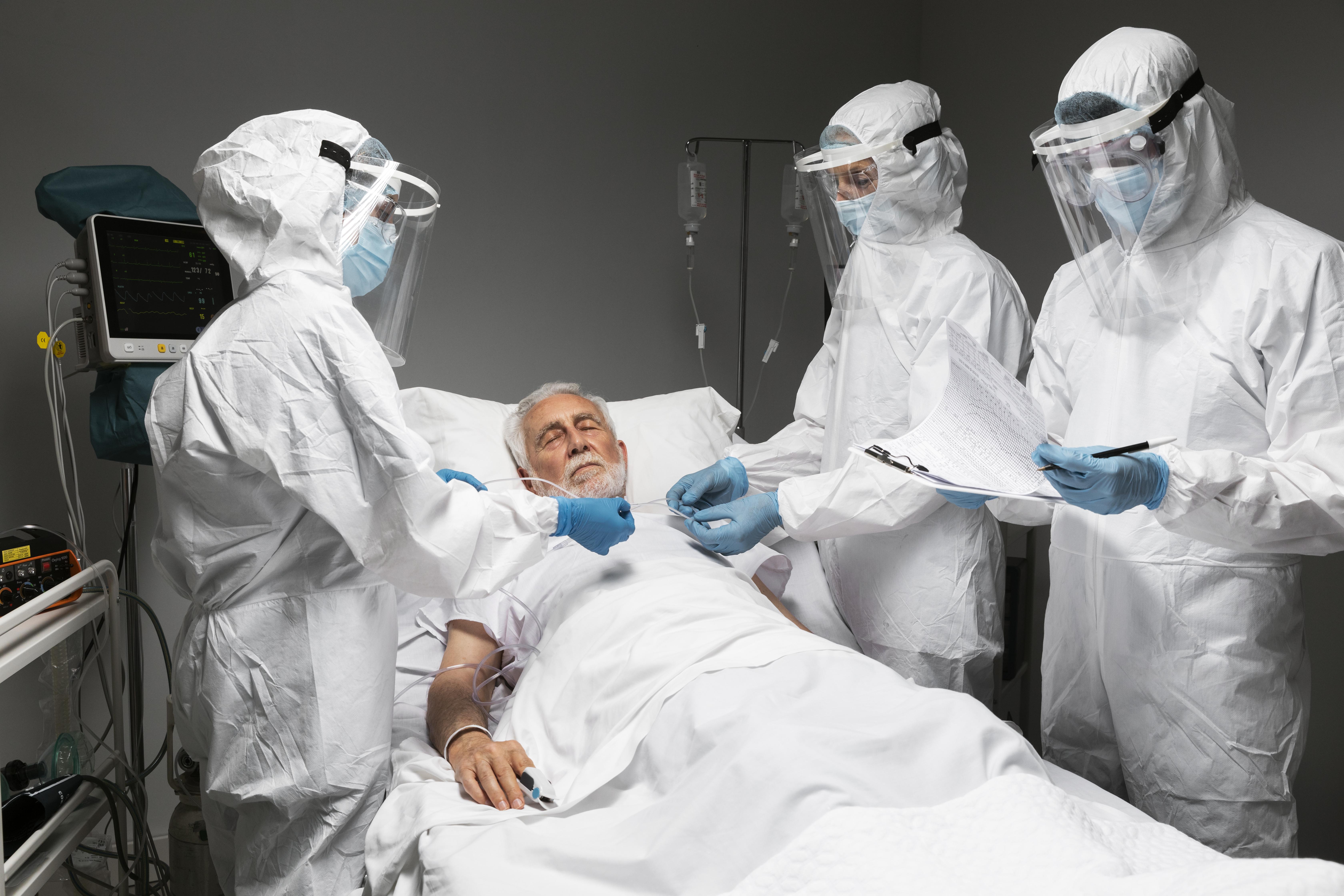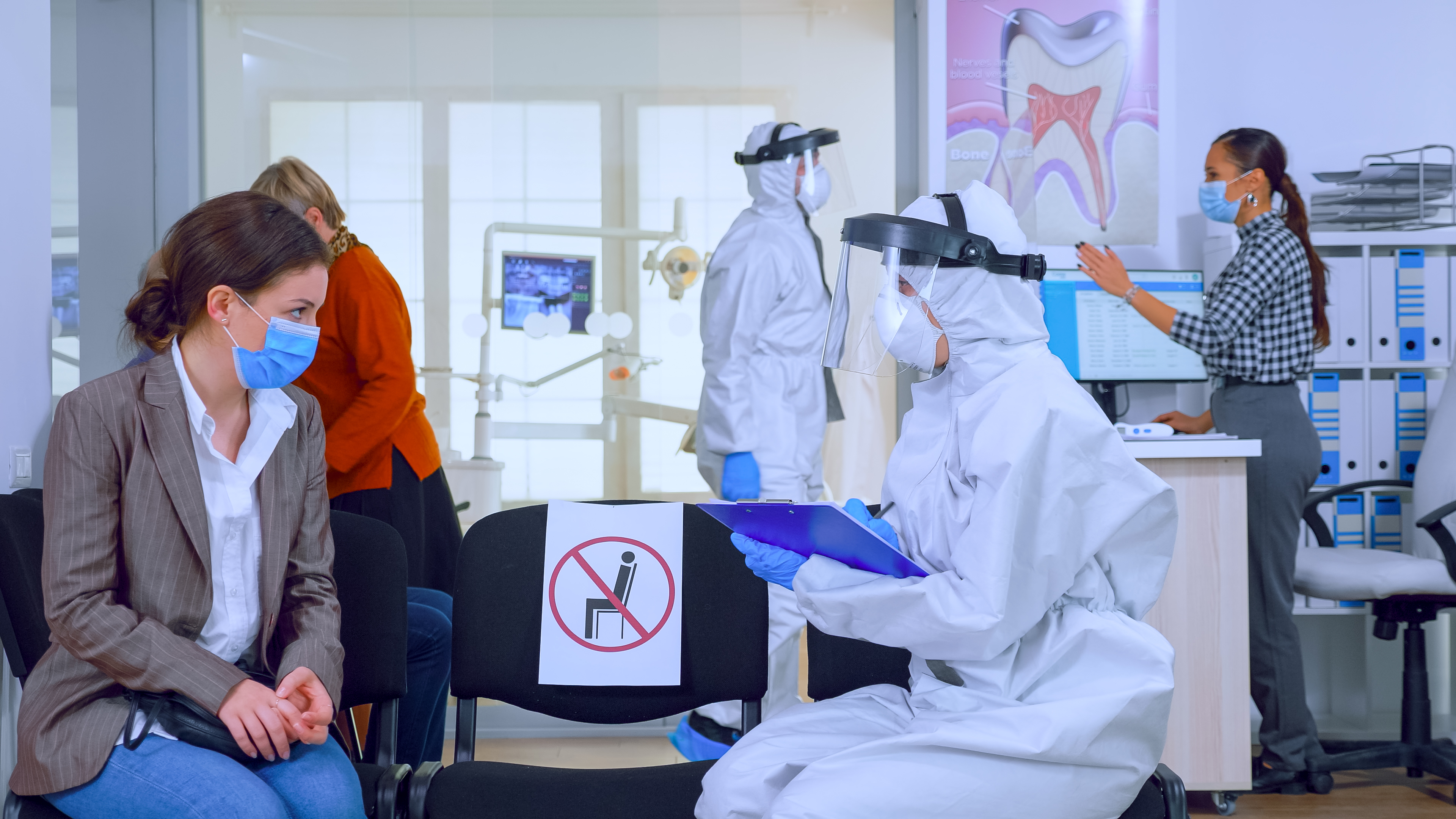The hospital is the most sensitive place where patients come to treat their diseases or physical issues. But these patients not only come with their diseases or physical problems, they also come with various bacteria, infections, or respiratory issues. Disinfecting hospitals and maintaining hygiene standards is not easy for enhancing appearance. Disinfecting the hospital means you save people from exchanging bacteria with one another.
Whether you are a safety or hygiene maintenance officer, hospital cleaner, doctor, or any facility manager, you need to understand why and how to maintain a safe and sanitized medical environment during hospital cleaning. In this blog, we will discuss how to prevent cross-infection during hospital cleaning or infection control.
What Is Cross-Infection In Hospitals?

Cross-infection means when bacteria and viruses are inadvertently transmitted between two or more people. In a hospital, such as visitors, patients, hospital staff, or doctors, can exchange diseases or infections. easily occurs between two patients or health workers, or also spreads with medical equipment or cleaning tools. All of these types of infections build a hazardous environment for all humans, because they directly attack their immune system, and produce more vulnerable diseases.
If the cleaners use the same mop cloth for different areas, such as the ICU, the general ward, or the private wards. These infections cause various complications, delay patient recovery, and strain all healthcare facilities.
Here are the major sources of Cross-Contamination
- Contaminated medical equipment
- High-touch surfaces
- Improper waste disposal
- Reuse of cleaning clothes without disinfection
- Not maintaining hand hygiene or cleaning staff among healthcare workers
When Should The Hospital Cleaning Be Done?
- You need to do regular hospital cleaning because it is frequent.
- ICU cleaning for critical patients and medical equipment
- Operating theater cleaning, properly disinfecting all surgical tools
- Clean high-traffic areas like the doctor’s cabin and waiting areas
- Clean patient wards or bathrooms and all surfaces.
How To Prevent Cross-Infection In Hospitals, Let’s Understand It Step By Step.
Let’s explore all the professional infection control checklists.
Follow Proper Hygiene Standards
When it talks about bacteria and fungal infections, your hand is the first defense. You need to choose an alcohol-based moisturizer that comes with a minimum of 70% ethanol. Or you need to choose single gloves to clean the area and follow the rules of the WHO five movements for hand hygiene.
- For Hospital Use, Colour-Coded Cleaning Equipment
- Use red cloths for bathroom cleaning
- Use blue cloths for mopping general areas
- Use green cloths for the kitchen or the pantry
- Yellow cloths for patient care zones
This simple solution makes your hospital contamination-free and bacteria-free.
Choose Hospital-Approved Grade Disinfectants
If you want to reduce cross-infections, you need to choose the best and hospital-approved equipment to stop all bacteria and viruses.
Here are some approved disinfectants:
- Bleach sodium hydrochloride
- Hydrogen peroxide
- Ammonium compounds
- Go with alcohol based cleaners
Hire Trained Cleaning Staff
Hire professional cleaners like CleanBees so that they can easily control infection.
- Cleaning sequences
- Use PPE kit
- No wastage of cleaning materials
- Emergency spill response
Reduce Clinical Wastage
You need proper management of clinical disposal and disposal according to colour-coded bins.
- Use a yellow bin for infectious waste
- Use sharp needles for red
- For general wastage, use black
- For pharmaceutical use, blue
Use disinfectants for high-touch areas, because bed rails, surface disinfectant, and doorknobs are the hubs of disinfectants.
Maintaining Proper Ventilation
A well-maintained ventilation area means less dirt, or allergen particles, especially in the corners of the hospital.
- Choose HEPA filters
- Ensure proper cleaning and airflow in dirty zones
What Are The Health Benefits Of Preventing Cross-Infection During Hospital Cleaning or Hospital General Support ?

- Regular disinfecting helps to reduce the spread of disease, which effectively stops all hazardous bacteria, viruses, or fungal infections between patients or healthcare workers.
- Protect vulnerable patients because the bacteria easily attack the immune system of weak patients, disinfection helps to recover easily all patients.
- Improve hygiene standards with regular cleaning solutions to ensure a safer and healthier environment for every person in the hospital.
- Increase staff efficiency because healthcare workers are less in contact with bacteria or germs and reduce casual or sick leaves to enhance productivity.
- Support faster recovery rates for all patients because there are no bacteria, germs, or infection chances.
- Maintaining hygiene standards easily builds patient trust because they easily recover without incurring additional medical expenses, and the hospital pays.
People Also Ask About How To Prevent Cross-Infection During Hospital Cleaning
Q.1 How can you prevent costs due to contaminants?
A: You can easily reduce costs by maintaining strict cleaning standards with proper training of staff, or by preventing cross-infection to reduce costs, hospital downtime.
Q.2 What are the best 4 strategies in short to reduce cross-infection?
A: Here are the best 4 strategies to reduce infection in your hospital.
- Use separate cleaning tools
- Disinfect all high-touch areas, such as the bed, switches, and all surfaces
- Follow proper hygiene standards
- Provide cleaning training to your team
Q.3 Does disinfection enhance patients’ confidence?
A: When you use proper disinfectants in your hospital so it also enhances your patients’ confidence to recover from every kind of disease, because it ensures hygiene, safety, and a fresh environment across the hospital.


